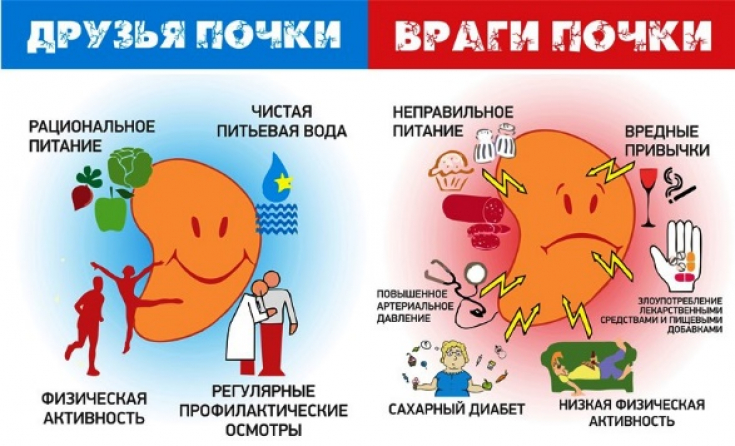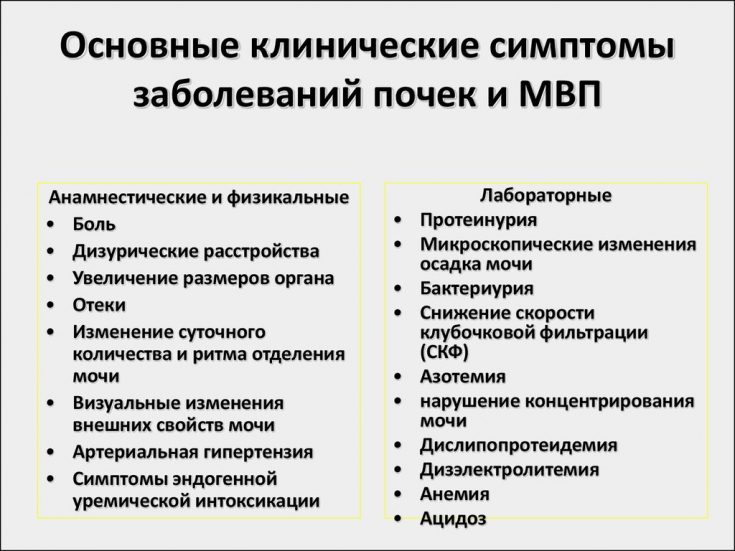It is the significance of renal failure, the reduction of its detrimental effect on the development of an unfavorable course of heart failure and the modern vision of maintaining water balance in patients with manifestations of chronic renal failure that is so important as the ability to foresee the consequences in the future.
In this article on estet-portal.com questions about the features of diuretic therapy in patients with pathology of the cardiovascular system and chronic renal failure are presented from the point of view of a nephrologist.
Neprologist's approach to diagnosing kidney failure
In addition to a detailed consideration of the mechanism of action of diuretic drugs, the feasibility of their appointment and increasing the effectiveness of the treatment of renal failure, nephrologists also believe that it is necessary to dwell on the problem of diagnosing fluid retention in the body in patients with heart failure.
Follow us on Instagram!
Diagnostic criteria for heart failure. The most important criteria for heart failure in patients with concomitant renal failure include:
1) increased left atrial filling pressure -> 7 mmHg Art. or wedge pressure in pulmonary capillaries > 18 mmHg;
2) chest x-ray: radicular dilatation, enlarged heart shadow, B-lines on lung ultrasound: multiple B-lines are considered an ultrasound sign of interstitial pulmonary edema, and their number is proportional to the decrease in tidal volume of the lung tissue;
3) surrogate markers: hematocrit and weight gain> 2 kg / week;
Kidney stones: it is important to relieve pain and remove
The given instrumentally determined signs of hypervolemia must be taken into account each time in order to achieve a state of normovolemia when prescribing one or another diuretic in patients with chronic renal failure. This is especially important to take into account, according to nephrologists, with concomitant heart failure, and it occurs in almost every third patient with renal failure, and in the period up to five years - in ≥50% of patients.
This significantly affects the progression of cardiovascular disease, kidney failure and premature death.
Conditions of chronic renal failure
As defined by nephrologists, chronic renal failure − This is a state in which within 3 months. pathological changes in urine or glomerular filtration rate (GFR) persist.
Renal failure concomitant or such as was formed as a result of cardiovascular pathology, is accompanied by a high risk of developing threatening cardiovascular complications with the risk of premature death. Given the above, it is important to prescribe cardiological drugs to these patients, since this significantly affects the reduction in the development of fatal cardiac complications and improves the quality and life expectancy.

The main markers for the development of adverse cardiovascular events, which are distinguished by nephrologists, as well as for adequate treatment of renal failure, are the level of albuminuria or the ratio of albumin / creatinine and GFR.
Today, it has been proven by nephrologists and many clinicians that in the absence of albuminuria and GFR ≥60 ml / min / 1.73 m2, a patient with heart failure is considered absolutely healthy for the development of kidney failure, and efforts aimed at preventing kidney failure may have complete success; conversely, if the total protein in the urine is ≥0.33 ‰ and GFR ≤ 60 ml / min / 1.73 m2, the patient, despite all attempts, will never avoid the development of kidney damage with the formation of their chronic pathology.
Dangerous perinephritis: symptoms and treatment of inflammation of the kidney capsule
Methods for diagnosing kidney failure
To date, the proposed GFR calculator, which takes into account GFR, albuminuria and creatinine level, can be considered an accurate method, highlighted by nephrologists, for predicting the degree of development of chronic kidney damage.
It is the main predictive tool for detecting the development of renal failure.
The main method of controlling normovolemia and treating chronic heart and kidney failure is dehydration therapy. The main guideline for successful dehydration therapy can be a daily decrease in the amount of interstitial fluid by 800-900 ml, determined by the impedance method with a daily diuresis of 2500 ml.
The main method of dehydration today is forced diuresis. Nephrologists consider the main signs of its correct implementation to be:
− Total urine output not less than 2500 and not more than 3000 ml,
− Daily weight loss within 800-900g
− Lack of thirst.

The concentration of natriuretic peptide is considered by nephrologists as a benchmark for a well-chosen diuretic therapy and a marker for preventing the development of resistance to the intended diuretic drugs. An elevated level indicates the expectation of a positive result from the action of diuretics in renal failure, and, conversely, − a decrease below the limit should indicate the need to discontinue diuretics for a while until sensitivity is restored.
Rare diagnoses in urology: Ormond's disease
Thus, dehydration therapy is now considered one of the important factors in preventing the progression of heart failure and reducing the risk of developing kidney failure. And it is the main key to reducing the risk of developing chronic renal failure and premature death from cardiovascular events.
Effective treatments for renal hypertension







Add a comment